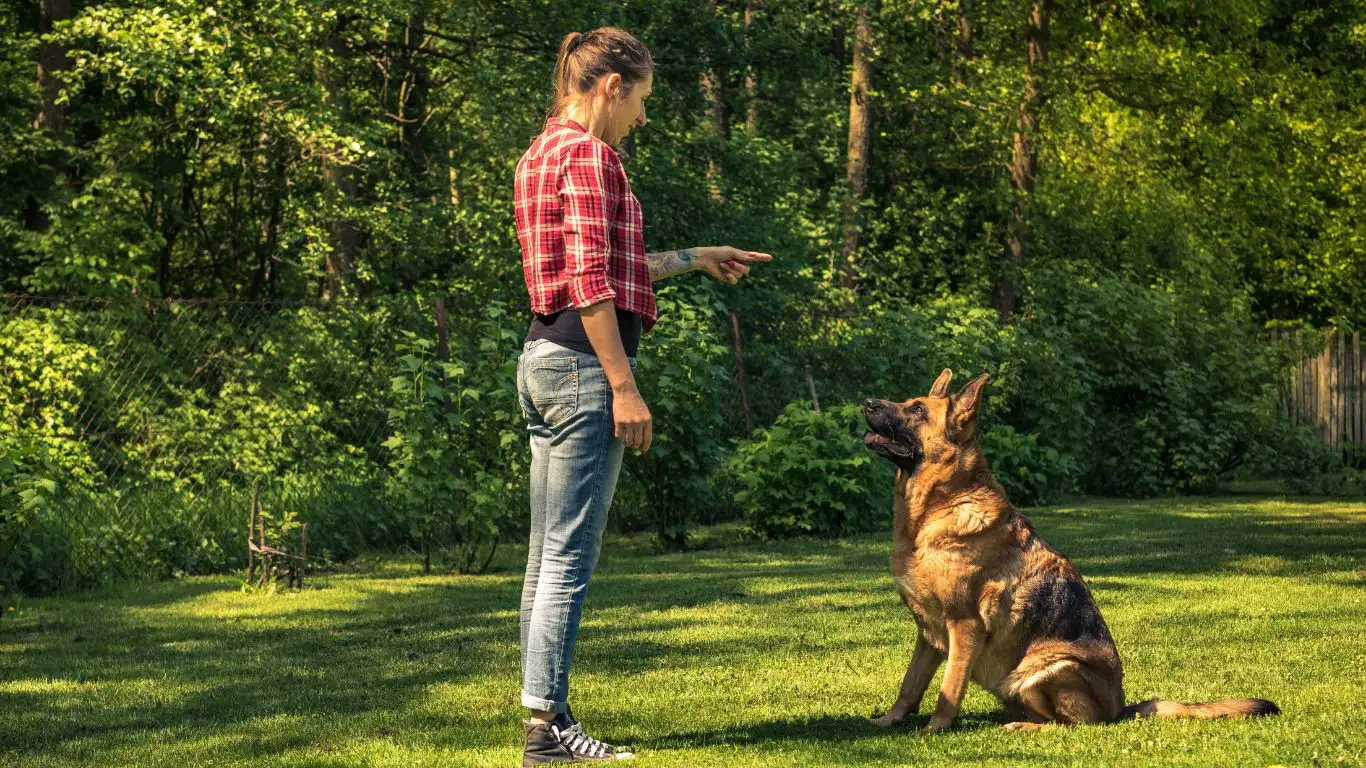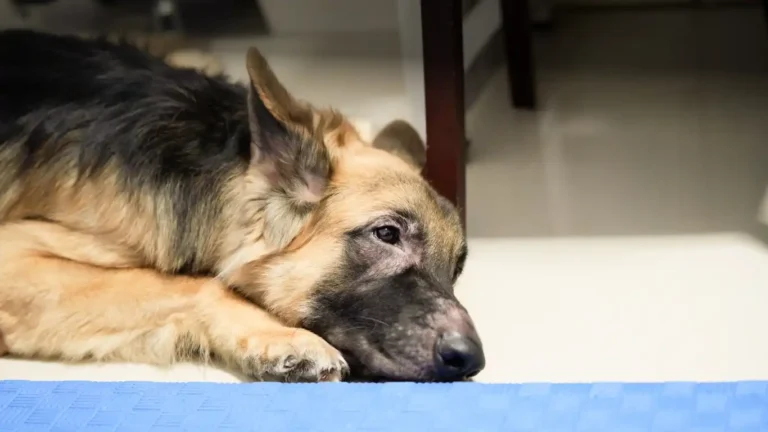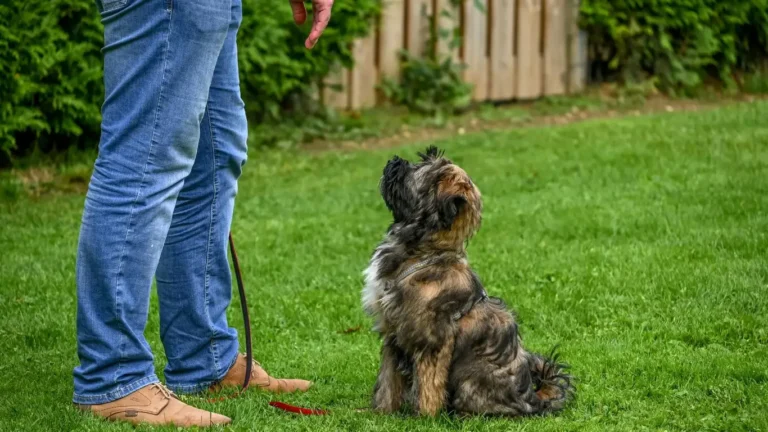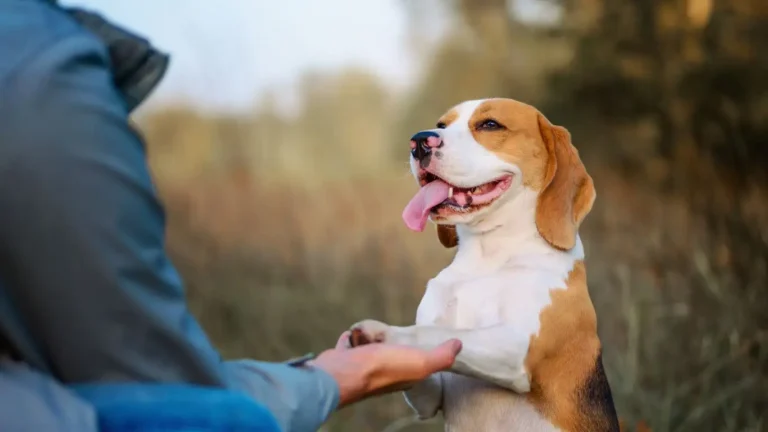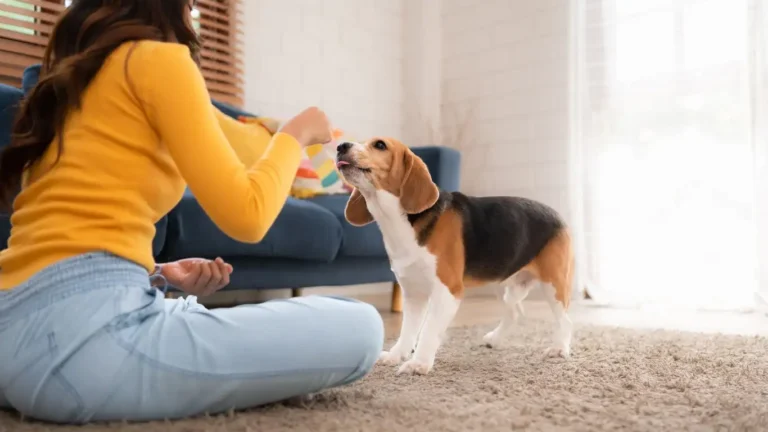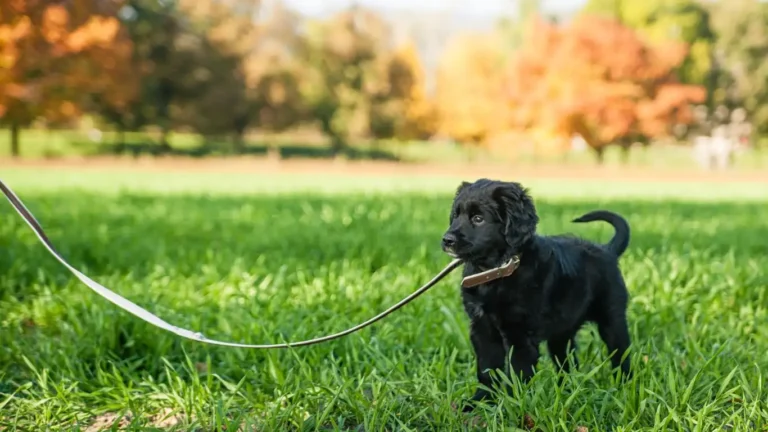Ultimate Guide to Train Your Dog to Stay Calm During Vet Exams
As a Canine-Assisted Therapy Trainer with years of hands-on experience, I’ve worked with countless dogs to help them stay calm and composed in a variety of environments. One of the most common challenges pet owners and trainers face is how to train a dog to stay calm during a vet exam. It’s not uncommon for dogs to feel anxious, stressed, or even fearful when visiting the vet. But with the right training techniques and a little patience, you can help your dog remain calm and relaxed throughout the examination.
The Importance of a Calm Vet Exam for Dogs
When it comes to visiting the vet, many dogs experience stress, and understandably so. The unfamiliar smells, sounds, and people can make the experience overwhelming for them. But, if you train your dog to stay calm during vet exams, you’re not only making the visit easier on your dog, but you’re also helping the veterinarian do their job more efficiently.
One of the biggest reasons why training your dog to stay calm is so important is that it improves their overall health and well-being. Dogs that are stressed during vet exams are more likely to exhibit negative behaviors, making it harder for the vet to perform necessary checks. They may resist being touched, which can make it difficult to conduct thorough exams or administer vaccinations. In some cases, stress during the vet visit can even worsen existing health issues, as anxiety can manifest physically, affecting the dog’s overall condition.

Training your dog to stay calm not only helps with vet visits but also improves their ability to handle other stressful situations, such as grooming, traveling, and even meeting new people or animals. In the long run, a well-trained dog that remains calm in stressful environments will be easier to manage and enjoy a more positive relationship with their human family members.
Building a Calm Foundation: How to Start Training Your Dog
Begin with the Basics
Before you even step foot in the vet’s office, it’s important to establish a foundation of calmness in your dog’s daily routine. This means incorporating relaxation techniques, positive reinforcement, and basic obedience into their regular training. The goal is to create an environment where your dog feels comfortable and safe, even in unfamiliar or stressful situations.
Start by teaching your dog basic commands like “sit,” “stay,” and “down.” These commands are simple but effective tools for calming your dog in any situation, including vet visits. Once your dog is comfortable with these commands in a calm, quiet environment, you can begin practicing them in more distracting settings to simulate the atmosphere of a vet exam.
Introduce the Vet Environment Gradually
One of the best ways to train a dog to stay calm during a vet exam is to introduce them to the vet environment gradually. This allows your dog to become familiar with the sights, sounds, and smells of the vet office without feeling overwhelmed all at once. It also helps them form positive associations with the vet visit, which can reduce anxiety over time.
Start by taking your dog to the vet’s office for a few non-medical visits. Let them explore the waiting area, interact with the staff, and get used to the sights and sounds of the clinic. Keep these visits short and positive, offering treats and praise whenever your dog remains calm. Over time, your dog will begin to associate the vet’s office with positive experiences, making them less likely to feel anxious when it’s time for a real exam.
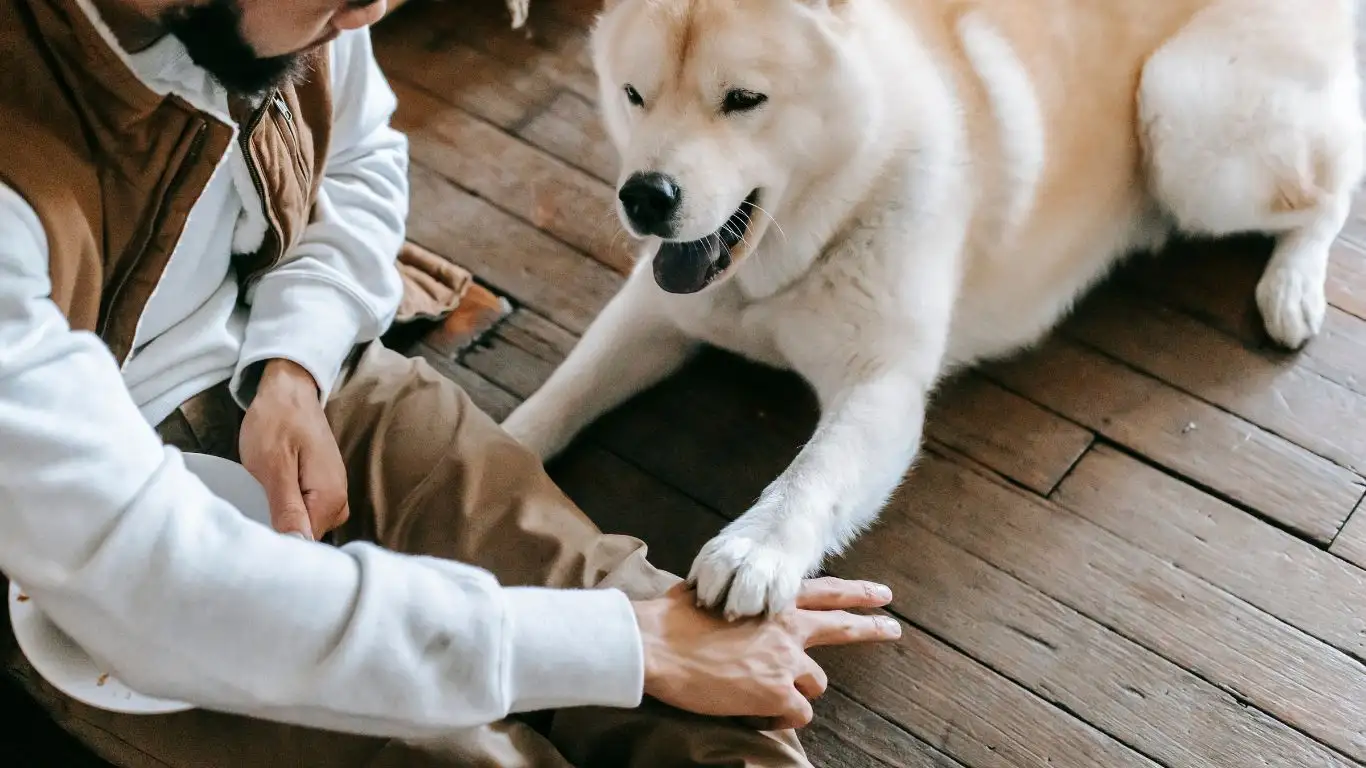
Positive Reinforcement is Key
Positive reinforcement is an essential tool when training your dog to stay calm during vet exams. By rewarding calm behavior with treats, praise, and affection, you reinforce the idea that staying calm leads to positive outcomes. This encourages your dog to repeat the desired behavior in the future, making it more likely that they’ll remain relaxed during future vet visits.
For example, when practicing at home, use treats to reward your dog whenever they stay calm during handling, such as when you touch their paws or examine their ears. Gradually build up to more challenging situations, like having them lie still while you simulate the actions of a vet exam. Every time they remain calm, offer a reward. This positive association will help them stay calm when they encounter similar situations at the vet’s office.
Dealing with Specific Anxiety Triggers During a Vet Exam
Identifying Common Anxiety Triggers
Every dog is different, and the triggers that cause anxiety during a vet exam can vary. Some dogs are more sensitive to noise, while others may be fearful of being touched or handled in certain ways. It’s important to identify the specific triggers that cause your dog stress so that you can address them during training.
- Handling and Touch: Some dogs are sensitive to certain parts of their bodies being touched, such as their paws, ears, or mouth. If your dog exhibits signs of stress when their vet touches these areas, it’s important to desensitize them through gradual training.
- Unfamiliar Scents: Vets’ offices can have a strong scent that may make some dogs uneasy. Familiarizing your dog with the scent of the vet’s office before the actual appointment can reduce their anxiety when they encounter it for real.
- Noise Sensitivity: The sounds of the vet clinic, including the buzzing of machines or the barking of other dogs, can be overwhelming. If your dog is noise-sensitive, practice calming exercises and bring along calming tools like anxiety wraps or soothing music to help them stay relaxed.
Desensitizing Your Dog to Vet Procedures
Once you’ve identified the specific triggers that cause your dog anxiety, it’s time to start desensitizing them. This process involves gradually exposing your dog to these triggers in a controlled manner, starting with less stressful situations and slowly working up to more challenging ones. The goal is to help your dog feel more comfortable and less anxious when exposed to these situations.
For example, if your dog is afraid of having their paws touched, begin by gently touching their paws at home while offering plenty of praise and treats. Over time, you can increase the duration and intensity of the touch until your dog becomes more comfortable with it. When the vet needs to examine their paws, your dog will be less likely to react with fear or resistance.
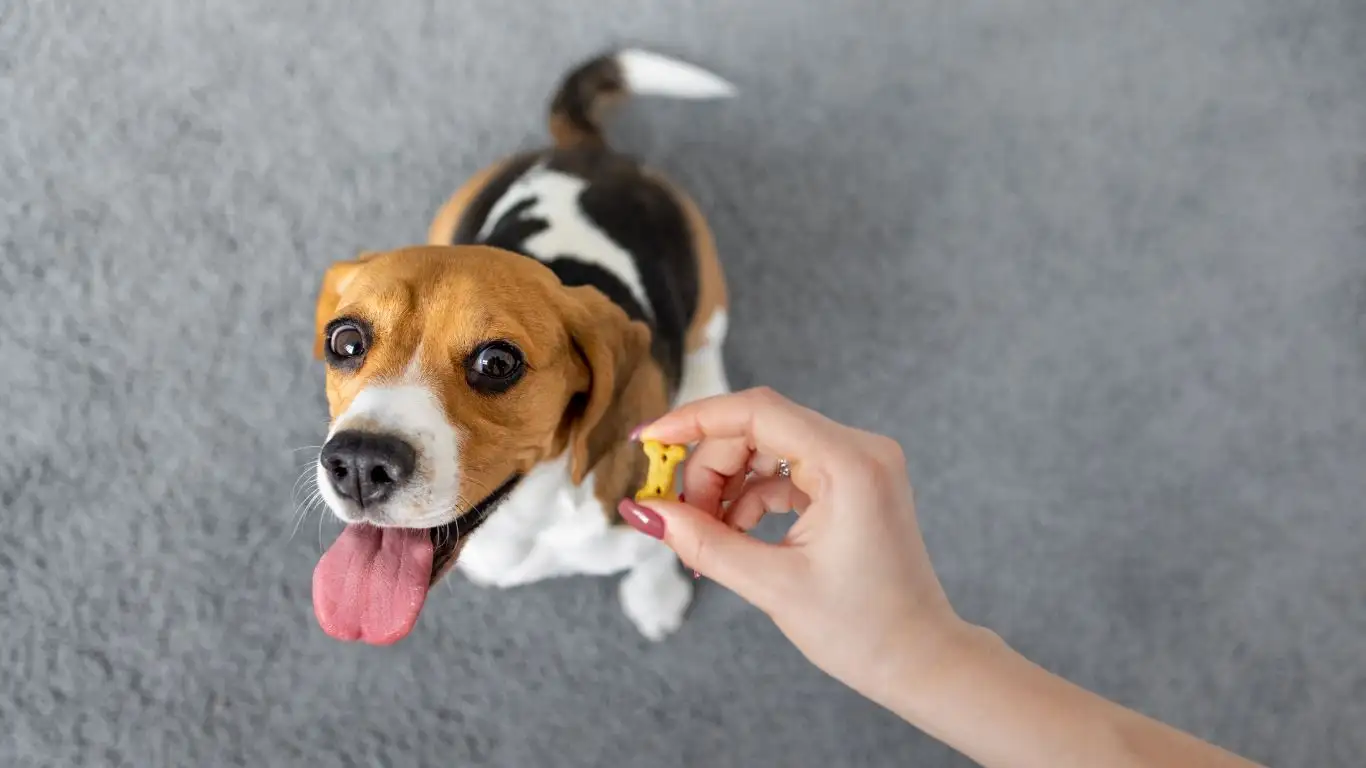
With consistency, patience, and positive reinforcement, your dog will learn to associate vet exams with calmness and relaxation. The goal is to create an environment where both you and your dog can walk into the vet’s office with confidence, knowing that the experience will be as stress-free as possible.
Using Calmness Training Techniques During Vet Visits
Incorporating Relaxation Techniques
When we talk about how to train a dog to stay calm during a vet exam, one of the key elements that I always recommend is incorporating relaxation techniques into your dog’s routine. A calm dog is more likely to stay calm, right? But how do we achieve that level of zen? It starts with making sure that your dog knows how to relax on command.
In my experience, I’ve found that deep breathing exercises can be a simple yet effective way to help your dog stay grounded. If you practice it with your dog regularly, you can cue them to take deep, calming breaths when things get a little intense at the vet. Sounds a bit “woo-woo,” right? But trust me, it works. It’s all about getting your dog used to calming techniques so that they know how to stay composed, no matter where they are.
Along with deep breathing, another technique I love is using calming signals like gentle body pressure or soft petting. It’s something I often use with the therapy dogs I train. By gently holding your dog’s body or giving them a soft stroke, you can release tension, making them feel more secure. When you’re practicing this at home, make sure it’s a slow and gentle process—don’t rush through it. The more your dog gets used to the sensation of being soothed, the easier it’ll be to implement it in stressful situations like a vet exam.
Positive Distractions During the Vet Visit
Another great way to keep your dog calm during a vet exam is by using positive distractions. You’ve probably heard of this technique before, but it’s one of my absolute favorites. Keeping your dog distracted with something fun and rewarding can take their focus off the vet’s procedures, reducing stress significantly.
One of the easiest distractions is food. I’m not talking about just any treat—I’m talking about their favorite, high-value treats that get them excited and focused. Bring a stash of treats to the vet, and offer them whenever your dog is calm and cooperative during the exam. This helps them associate the vet with something positive. The goal is to keep their mind engaged in something they enjoy, rather than fixating on the unfamiliar environment.
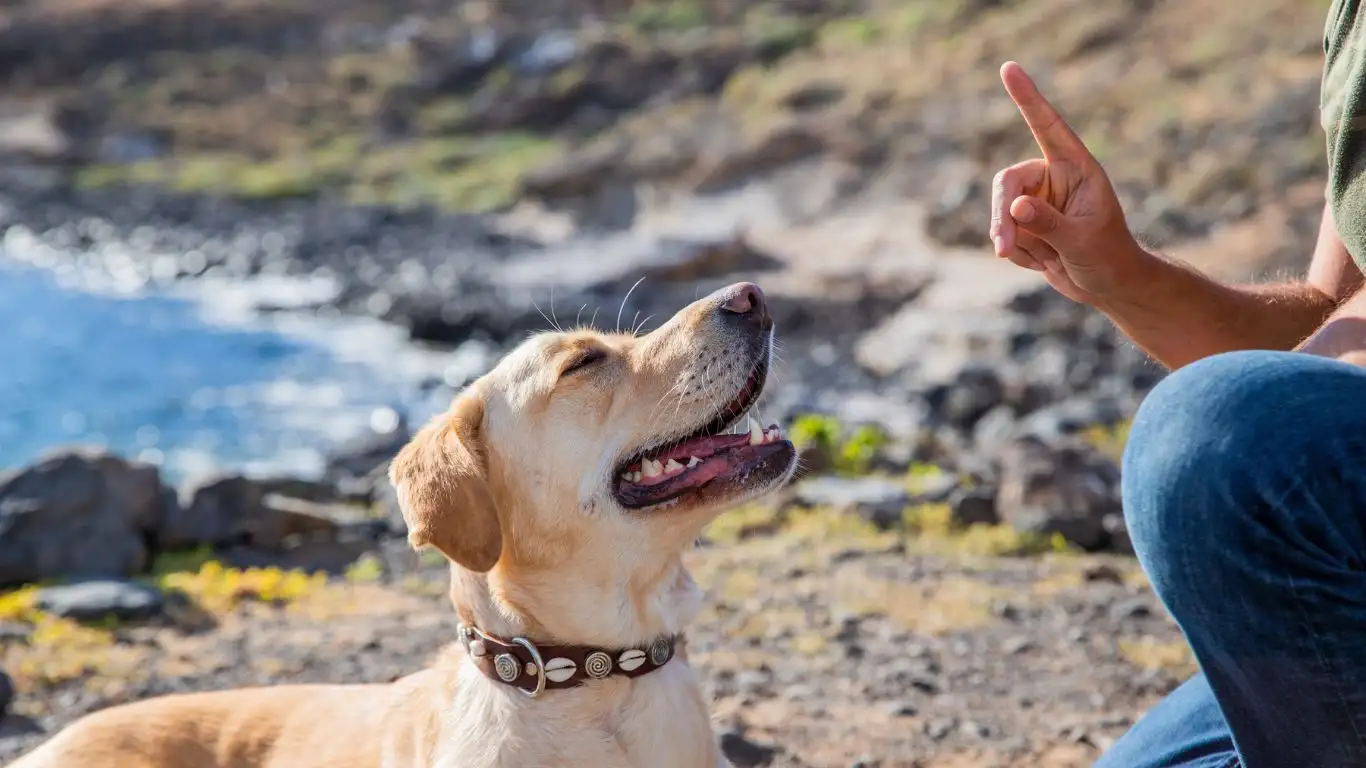
Chew toys and puzzle toys can also work wonders for keeping your dog entertained. Some dogs love working for their food, so puzzle feeders can give them something to focus on during long waits in the vet’s office. Not only does this keep your dog distracted, but it also makes them associate the vet with something rewarding and fun, which is a great way to minimize anxiety.
What to Do When Your Dog Starts Showing Signs of Stress
Recognizing Stress Signals Early
One of the most important things I’ve learned over the years is that early recognition of stress signals can make all the difference in keeping your dog calm. Dogs are masters of communication, but sometimes it takes a trained eye to spot the subtle signs of stress that may be building up before they fully escalate.
In my experience, some of the first signs that a dog is feeling anxious are simple body language cues: drooping ears, lip licking, yawning, and a tense body posture. If you notice these signs, it’s time to step in before things get out of hand. Early intervention is key, and it’s something I emphasize in my training sessions. I always tell dog owners to stay observant, especially when they’re in a new or potentially stressful environment like the vet’s office.
Redirecting Your Dog’s Attention
If you see your dog getting stressed, don’t panic. I’ve learned that redirecting their attention can often help diffuse the situation. A simple shift in focus can go a long way in calming your dog. Use the same techniques you practiced at home, whether it’s offering a favorite toy, giving them a special treat, or asking them to perform a calming command like “sit” or “down.”
Sometimes, a quick walk outside the vet’s office to let your dog calm down can do wonders, too. If things get too intense, take a breather, and let your dog cool down before re-entering the clinic. This is especially useful for dogs that are highly reactive. Just make sure you stay consistent with your calming techniques so that your dog knows exactly what to expect and what is expected of them in these moments of stress.
Using Calming Products and Tools to Support Your Dog
Natural Calming Aids
In addition to training and relaxation techniques, many dog owners find that calming products can be a helpful part of the process, especially if your dog’s anxiety is particularly severe. Some of the most popular tools I’ve used in my therapy dog training programs include calming sprays, anxiety wraps, and soothing music.
One of the easiest tools to try is an anxiety wrap, like the Thundershirt. These wraps apply gentle pressure to your dog’s body, which can help reduce stress and anxiety. It’s a method that works for many dogs, especially when used in conjunction with training. If you think your dog might benefit from one, it’s worth giving it a try, particularly if you know they’ll be entering a stressful situation, such as a vet exam.
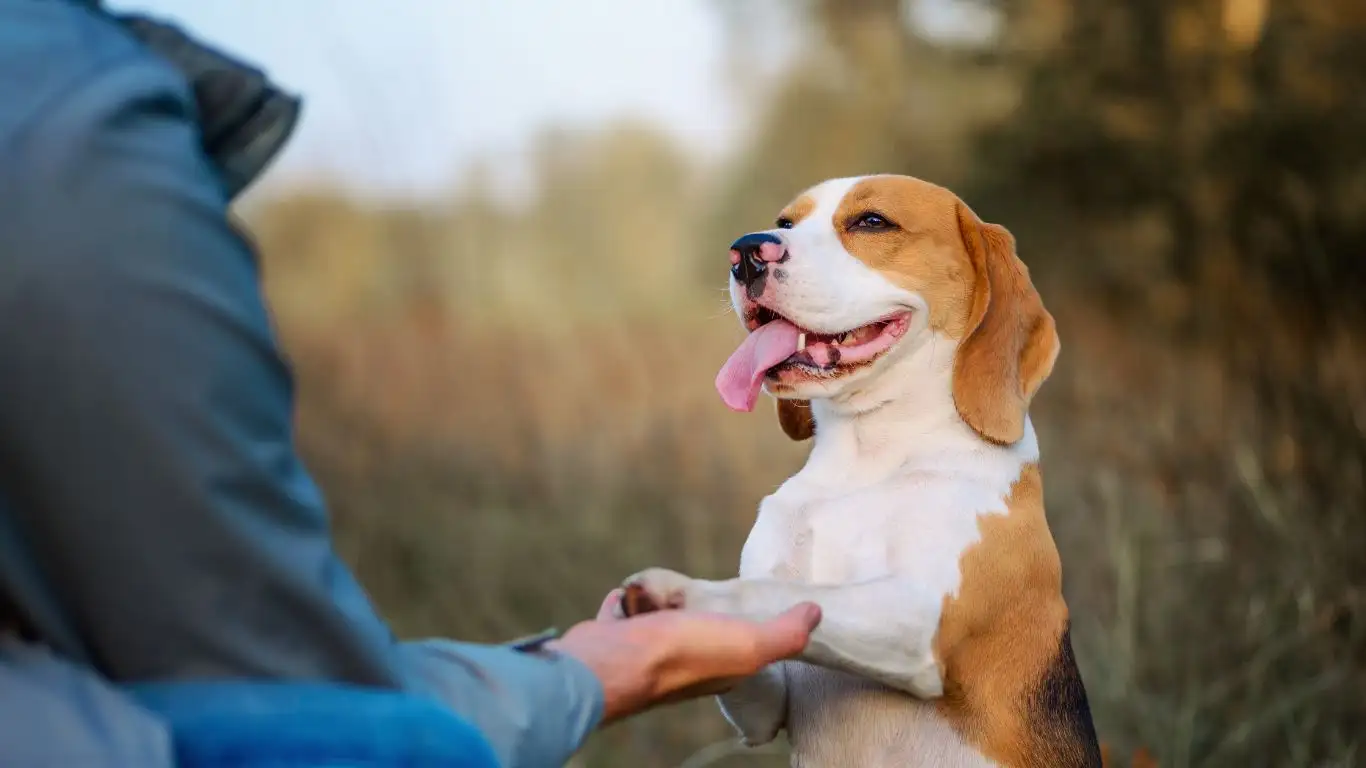
There are also various calming sprays and diffusers available that release pheromones to help relax your dog. These sprays mimic the natural pheromones dogs release to calm themselves, so they can help your dog feel more at ease in an unfamiliar environment. If your dog tends to get stressed when they smell unfamiliar scents, a calming spray might be the perfect solution. Just spray it on your dog’s collar or bedding before the visit, and it can help reduce the tension they feel.
Consulting with Your Vet About Medication Options
Sometimes, despite your best efforts, your dog’s anxiety can still be overwhelming. In these cases, it’s important to talk to your vet about medication options that may help ease your dog’s stress during a vet exam. This is a topic I’ve had many discussions about with pet owners, and it’s important to remember that medication is not a failure of training—it’s just another tool in your toolbox.
For dogs that experience extreme anxiety, there are prescription medications and calming supplements available that can help reduce stress. If your dog’s anxiety is severely affecting their health or the ability to perform necessary medical exams, a vet may suggest medication as part of a comprehensive treatment plan. Always consult with your vet to find the best solution for your dog’s specific needs, and remember that this can be part of the ongoing process to help your dog stay calm during vet visits.
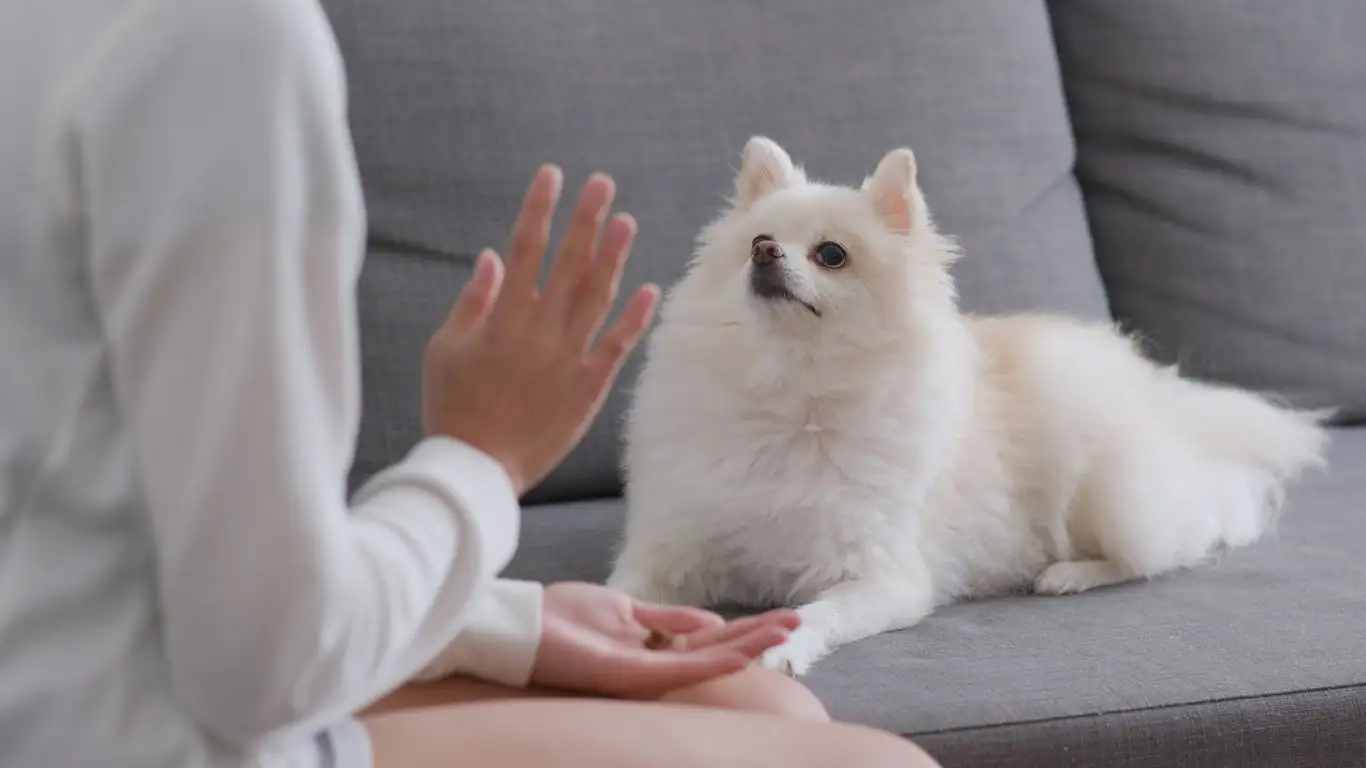
In the end, training your dog to stay calm during vet exams is a journey. It takes time, patience, and consistency, but with the right approach, your dog will eventually feel more comfortable and relaxed when it’s time for their appointment. Remember that every dog is different, and what works for one dog may not work for another. But with love, positive reinforcement, and the right techniques, you can create a calm and stress-free experience for both you and your furry companion.
Dealing with Setbacks and Patience in Training
Understanding That Progress Takes Time
Training a dog to stay calm during a vet exam isn’t something that happens overnight. I can’t tell you how many times I’ve had to remind myself (and my clients) that patience is key. As much as we want immediate results, dogs don’t always work on our timeline. This is something I’ve seen time and time again, especially with dogs that are particularly nervous or reactive. It’s essential to keep in mind that every dog is different, and progress can sometimes feel slow.
In my experience, the best way to approach this process is with a growth mindset. That means celebrating the small victories—whether it’s your dog remaining calm for just a few seconds longer during a vet exam or sitting quietly while you clip their nails at home. These small wins add up over time, and they’ll give both you and your dog the confidence to push through the more challenging moments.
There will be days when it feels like your dog is backtracking, and that’s okay. Setbacks are normal. Dogs, like people, have their good days and bad days. What’s important is that you stay consistent with your training, even when it feels like things aren’t progressing as quickly as you’d like. With each training session, your dog is building trust and learning that calmness is rewarding, which is the foundation of a positive vet experience.

Handling Situations When the Training Doesn’t Work Immediately
Despite all your hard work, there will be times when the training doesn’t seem to work right away. Maybe your dog is still nervous about going to the vet or starts to act out during the appointment. I’ve worked with many clients whose dogs still get anxious even after months of training, and it can be frustrating. But it’s important to remember that some dogs require more time to adjust, and you might need to revisit some of the techniques we’ve talked about.
During these times, it’s a good idea to break down the vet visit into smaller, more manageable steps. For example, if your dog is nervous about getting on the vet’s exam table, start by practicing at home. You can mimic the motions of the vet exam table with a surface like a bench or a raised platform. Practice getting your dog to jump on and off, rewarding them for calm behavior. This will help them become more comfortable with the process without the added stress of the vet clinic.
Integrating Desensitization Into Regular Vet Visits
Simulating Vet Exams at Home
One of the most effective ways to prepare your dog for the real deal is by simulating a vet exam in the comfort of your own home. I’ve had many clients report that practicing the vet exam routine at home helped their dogs feel much more relaxed and less anxious when it came time for an actual vet visit.
Start by practicing basic vet exam maneuvers, like checking your dog’s ears, mouth, and paws. I recommend using treats and praise to reward calm behavior during each step. Gradually introduce the sound of a stethoscope or gently press on your dog’s body as if you were the vet doing a thorough exam. This allows your dog to experience the sensation of being touched and handled without the pressure of the vet’s office. Eventually, these training sessions will desensitize your dog to the vet exam process, making them more comfortable during their next real appointment.
Taking Advantage of Your Vet’s Help
Don’t hesitate to work with your vet to help your dog get comfortable with their exams. A lot of vets are more than willing to help with training, especially if they know you’re working hard to reduce your dog’s anxiety. Some vets even allow you to schedule a “practice” visit, where you can bring your dog in to get used to the environment without the stress of an actual exam.
I’ve had clients use this technique successfully, where they visit the vet just to hang out for a few minutes, interact with the staff, and get some treats. Over time, these practice visits make the real exams much easier. You can also ask your vet to be patient with your dog during their exam, giving them breaks if needed or allowing them to stay on the floor if they’re nervous about the table. With this collaborative approach, you and your vet can work together to create a positive and calming experience for your dog.
References and Resources
Throughout the process of training your dog to stay calm during vet visits, it’s helpful to seek out expert advice and trusted resources. Here are a few websites that I recommend to my clients for additional information and support:
- American Kennel Club (AKC): A comprehensive source for dog training advice, including how to handle anxiety and stress in dogs.
- PetMD: Offers veterinary advice and health tips for dog owners, including handling vet visits and stress management.
- National Institutes of Health (NIH): A great resource for general health and wellness information, including mental health for pets.
- Health.com: For tips on managing anxiety, not just for dogs, but for pet owners as well!
Disclaimer
While the information provided in this article is based on years of experience working with dogs in various training settings, it is important to remember that every dog is unique. The techniques discussed here may not work for every dog, and in some cases, additional professional training or veterinary support may be necessary. Always consult with a professional dog trainer or veterinarian if your dog’s anxiety is severe or if you encounter any difficulties during training. The goal is to work together to ensure your dog’s comfort and well-being, both during vet visits and in everyday life.
Training your dog to stay calm during a vet exam is an ongoing journey, and while it may take time, the results are worth it. By being patient, using positive reinforcement, and working closely with your vet, you can help your dog overcome their anxiety and create a calm, stress-free experience during their visits. And in the end, that’s what matters most—ensuring your dog’s health and happiness!
